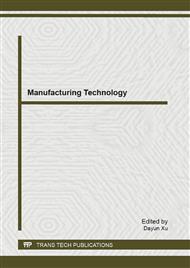p.344
p.348
p.352
p.356
p.360
p.366
p.372
p.377
p.383
Modeling of a Rear-End Crash Pulse Generator
Abstract:
The rear-end crash pulse generator has been considered to be a key device for performing car impact safety research under laboratory conditions. According to the international regulation, ECE R44, the polyurethane (PU) tube was recommended to produce a standard rear-end pulse. However, little literatures on the impact dynamics of PU tube were known. In this study, a was established under ANSYS/LS-DYNA. With this finite element model, the following conditions to generate the standard rear-end impact pulses were determined: the initial impact velocity of sled was 30km/h, the resultant mass of sled was 680kg, number of PU-tubes was three, and outer diameter of olive knob was 46mm. Compared with the standard deceleration-time curve of actual rear-end crash, this finite element model of rear-end crash pulse generator was preliminarily validated.
Info:
Periodical:
Pages:
360-365
Citation:
Online since:
December 2012
Authors:
Price:
Сopyright:
© 2013 Trans Tech Publications Ltd. All Rights Reserved
Share:
Citation:


